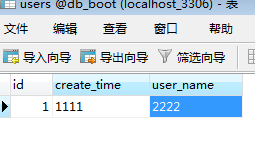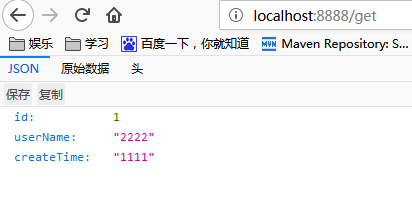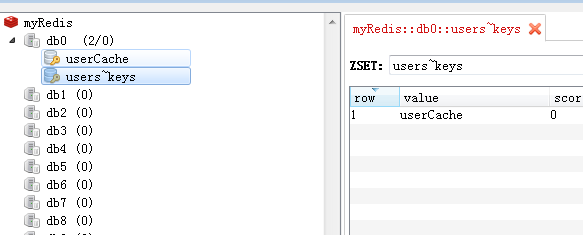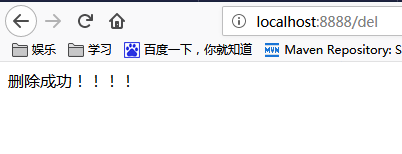(十五)SpringBoot之使用Redis做缓存数据
2017-12-14 14:25
711 查看
一、添加Redis依赖
<?xml version="1.0" encoding="UTF-8"?> <project xmlns="http://maven.apache.org/POM/4.0.0" xmlns:xsi="http://www.w3.org/2001/XMLSchema-instance" xsi:schemaLocation="http://maven.apache.org/POM/4.0.0 http://maven.apache.org/xsd/maven-4.0.0.xsd"> <modelVersion>4.0.0</modelVersion> <groupId>com.shyroke.redis</groupId> <artifactId>springboot_redis</artifactId> <version>0.0.1-SNAPSHOT</version> <packaging>war</packaging> <name>springboot_redis</name> <description>Demo project for Spring Boot</description> <parent> <groupId>org.springframework.boot</groupId> <artifactId>spring-boot-starter-parent</artifactId> <version>1.4.7.RELEASE</version> <relativePath/> <!-- lookup parent from repository --> </parent> <properties> <project.build.sourceEncoding>UTF-8</project.build.sourceEncoding> <project.reporting.outputEncoding>UTF-8</project.reporting.outputEncoding> <java.version>1.8</java.version> </properties> <dependencies> <dependency> <groupId>org.springframework.boot</groupId> <artifactId>spring-boot-starter-cache</artifactId> </dependency> <dependency> <groupId>org.springframework.boot</groupId> <artifactId>spring-boot-starter-data-jpa</artifactId> </dependency> <dependency> <groupId>org.springframework.boot</groupId> <artifactId>spring-boot-starter-data-redis</artifactId> </dependency> <dependency> <groupId>org.springframework.boot</groupId> <artifactId>spring-boot-starter-web</artifactId> </dependency> <dependency> <groupId>org.springframework.boot</groupId> <artifactId>spring-boot-devtools</artifactId> <scope>runtime</scope> </dependency> <dependency> <groupId>mysql</groupId> <artifactId>mysql-connector-java</artifactId> <scope>runtime</scope> </dependency> <dependency> <groupId>org.springframework.boot</groupId> <artifactId>spring-boot-starter-tomcat</artifactId> <scope>provided</scope> </dependency> <dependency> <groupId>org.springframework.boot</groupId> <artifactId>spring-boot-starter-test</artifactId> <scope>test</scope> </dependency> </dependencies> <build> <plugins> <plugin> <groupId>org.springframework.boot</groupId> <artifactId>spring-boot-maven-plugin</artifactId> </plugin> </plugins> </build> </project>
二、 application配置
server.port=8888 #数据库连接配置 spring.datasource.url=jdbc:mysql://localhost/db_boot?useUnicode=true&characterEncoding=utf-8 spring.datasource.username=root spring.datasource.password= spring.datasource.driver-class-name=com.mysql.jdbc.Driver # JPA spring.jpa.show-sql=true spring.jpa.hibernate.ddl-auto= update #redis spring.cache.type=redis spring.redis.host=localhost spring.redis.port=6379 #spring.redis.password= #spring.redis.database=0 #spring.redis.pool.max-active=8 #spring.redis.pool.max-idle=8 #spring.redis.pool.max-wait=-1 #spring.redis.pool.min-idle=0 #spring.redis.timeout=0
三、 redis缓存配置类
package com.shyroke.config;
import com.fasterxml.jackson.annotation.JsonAutoDetect;
import com.fasterxml.jackson.annotation.PropertyAccessor;
import com.fasterxml.jackson.databind.ObjectMapper;
import org.springframework.cache.CacheManager;
import org.springframework.cache.annotation.CachingConfigurerSupport;
import org.springframework.cache.annotation.EnableCaching;
import org.springframework.cache.interceptor.KeyGenerator;
import org.springframework.context.annotation.Bean;
import org.springframework.context.annotation.Configuration;
import org.springframework.data.redis.cache.RedisCacheManager;
import org.springframework.data.redis.connection.RedisConnectionFactory;
import org.springframework.data.redis.core.RedisTemplate;
import org.springframework.data.redis.core.StringRedisTemplate;
import org.springframework.data.redis.serializer.Jackson2JsonRedisSerializer;
import java.lang.reflect.Method;
@Configuration
public class RedisConfig extends CachingConfigurerSupport {
/*
* 定义缓存数据 key 生成策略的bean 包名+类名+方法名+所有参数
*/
@Bean
public KeyGenerator wiselyKeyGenerator(){
return new KeyGenerator() {
@Override
public Object generate(Object target, Method method, Object... params) {
StringBuilder sb = new StringBuilder();
sb.append(target.getClass().getName());
sb.append(method.getName());
for (Object obj : params) {
sb.append(obj.toString());
}
return sb.toString();
}
};
}
/*
* 要启用spring缓存支持,需创建一个 CacheManager的 bean,CacheManager 接口有很多实现,这里Redis 的集成,用
* RedisCacheManager这个实现类 Redis 不是应用的共享内存,它只是一个内存服务器,就像 MySql 似的,
* 我们需要将应用连接到它并使用某种“语言”进行交互,因此我们还需要一个连接工厂以及一个 Spring 和 Redis 对话要用的
* RedisTemplate, 这些都是 Redis 缓存所必需的配置,把它们都放在自定义的 CachingConfigurerSupport 中
*/
@Bean
public CacheManager cacheManager(@SuppressWarnings("rawtypes") RedisTemplate redisTemplate) {
RedisCacheManager cacheManager = new RedisCacheManager(redisTemplate);
// cacheManager.setDefaultExpiration(60);//设置缓存保留时间(seconds)
return cacheManager;
}
// 1.项目启动时此方法先被注册成bean被spring管理,如果没有这个bean,则redis可视化工具中的中文内容(key或者value)都会以二进制存储,不易检查。
@Bean
public RedisTemplate<String, String> redisTemplate(RedisConnectionFactory factory) {
StringRedisTemplate template = new StringRedisTemplate(factory);
Jackson2JsonRedisSerializer jackson2JsonRedisSerializer = new Jackson2JsonRedisSerializer(Object.class);
ObjectMapper om = new ObjectMapper();
om.setVisibility(PropertyAccessor.ALL, JsonAutoDetect.Visibility.ANY);
om.enableDefaultTyping(ObjectMapper.DefaultTyping.NON_FINAL);
jackson2JsonRedisSerializer.setObjectMapper(om);
template.setValueSerializer(jackson2JsonRedisSerializer);
template.afterPropertiesSet();
return template;
}
}
四、在springboot启动类中添加缓存支持
@SpringBootApplication
@EnableCaching
public class SpringbootRedisApplication {
public static void main(String[] args) {
SpringApplication.run(SpringbootRedisApplication.class, args);
}
}
五、编写控制类
package com.shyroke.controller;
import org.springframework.beans.factory.annotation.Autowired;
import org.springframework.stereotype.Controller;
import org.springframework.web.bind.annotation.RequestMapping;
import org.springframework.web.bind.annotation.ResponseBody;
import com.shyroke.bean.UserBean;
import com.shyroke.mapper.UserMapper;
import com.shyroke.service.UserServiceI;
import com.shyroke.util.DateUtil;
@Controller
@RequestMapping(value = "/")
public class IndexController {
@Autowired
private UserServiceI userService;
@ResponseBody
@RequestMapping(value = "/get")
public UserBean get() {
return userService.getUserById(1);
}
@ResponseBody
@RequestMapping(value="/update")
public UserBean update() {
UserBean user=userService.getUserById(1);
user.setCreateTime(DateUtil.getDataFormat());
user.setUserName("test");
return userService.update(user);
}
@ResponseBody
@RequestMapping(value="/del")
public String del() {
return userService.del(1);
}
}
六、Service层接口及其实现
package com.shyroke.service;
import com.shyroke.bean.UserBean;
public interface UserServiceI {
UserBean getUserById(int i);
UserBean update(UserBean user);
String del(int id);
}
- 实现类
package com.shyroke.service.impl;
import org.springframework.beans.factory.annotation.Autowired;
import org.springframework.cache.annotation.CacheConfig;
import org.springframework.cache.annotation.CacheEvict;
import org.springframework.cache.annotation.CachePut;
import org.springframework.cache.annotation.Cacheable;
import org.springframework.stereotype.Service;
import com.shyroke.bean.UserBean;
import com.shyroke.mapper.UserMapper;
import com.shyroke.service.UserServiceI;
@Service
@CacheConfig(cacheNames="users")
public class UserServiceImpl implements UserServiceI {
@Autowired
private UserMapper userMapper;
@Cacheable(key="'userCache'")
@Override
public UserBean getUserById(int i) {
System.out.println("执行这里,说明缓存中读取不到数据,直接读取数据库....");
return userMapper.findOne(i);
}
@CachePut(key="'userCache'")
@Override
public UserBean update(UserBean user) {
System.out.println("执行这里,更新数据库,更新缓存....");
return userMapper.save(user);
}
@CacheEvict(key="'userCache'")
@Override
public String del(int id) {
userMapper.delete(id);
return "删除成功!!!!";
}
}
- 注意:
- @CacheConfig(cacheNames="users") 注解指的是该类中的缓存的名称都是users
-
@CachePut(key=" 'userCache' ")中userCache要加‘’单引号,表示这是一个字符串。
-
@Cacheable能够根据方法的请求参数对其结果进行缓存(缓存的是方法的返回结果),一般用于insert()操作
- @CachePut(key="'userCache'")主要针对方法配置,能够根据方法的请求参数对其结果进行缓存,和 @Cacheable 不同的是,它每次都会触发真实方法的调用,一般用于update()操作
- @CacheEvict(key="'userCache'")主要针对方法配置,能够根据一定的条件对缓存进行清空,一般用于delete()操作
- 本例中的@Cacheable和@CachePut和@CacheEvict的key值必须都是同一个缓存的key,因为这样当update的时候缓存的时候,get方法的得到的才是最新数据,而当删除的时候@CacheEvict,也必须把该key的缓存删除。
七、编写mapper
package com.shyroke.mapper;
import org.springframework.data.jpa.repository.JpaRepository;
import org.springframework.stereotype.Repository;
import com.shyroke.bean.UserBean;
@Repository
public interface UserMapper extends JpaRepository<UserBean,Integer> {
}
八、实验结果
- 启动springboot会在数据库中根据bean的定义自动创建一个表数据。插入一条测试数据

- 如下访问http://localhost:8888/get ,获取结果,并生成一个缓存。




- 如下 访问 http://localhost:8888/update ,更新数据,更新缓存,



- 执行上一步更新缓存后,如下我们再访问http://localhost:8888/get,获取的是最新数据,且没有没有发出sql语句说明是从缓存中读取的数据。


- 如下访问http://localhost:8888/del,缓存被清空。


九、总结
要缓存的 Java 对象必须实现 Serializable 接口,因为 Spring 会将对象先序列化再存入 Redis,如果不实现 Serializable 的话将会遇到类似这种错误:nested exception is java.lang.IllegalArgumentException: DefaultSerializer requires a Serializable payload but received an object of type。。。
相关文章推荐
- Spring Boot使用redis做数据缓存
- spring boot使用redis做数据缓存
- 使用Redis作为SpringBoot项目数据缓存
- Spring Boot使用redis做数据缓存
- spring-boot 整合redis作为数据缓存
- 3 Springboot中使用redis,redis自动缓存异常处理
- redis中的基本数据类型,以及在Spring-Boot对Redis的基本使用
- 4 Springboot中使用redis存储集合数据,并模拟条件查询、分页读取
- SpringBoot中使用Redis实现缓存
- spring-boot | 整合Redis缓存数据
- SpringBoot+Mybatis项目使用Redis做Mybatis的二级缓存
- redis中的基本数据类型,以及在Spring-Boot对Redis的基本使用
- Redis系列三 - Spring boot如何使用redis做缓存及缓存注解的用法总结
- spring boot 整合redis对查询数据做缓存( 利用spring的AOP技术)
- 使用 Spring data redis 结合 Spring cache 缓存数据配置
- Redis系列三 - Spring boot如何使用redis做缓存及缓存注解的用法总结
- Spring Boot中的缓存支持(二)使用Redis做集中式缓存
- [置顶] 在Springboot上使用jedis来操作缓存redis --jedis的配置
- Spring Boot 基于注解的 Redis 缓存使用
- Spring Boot中的缓存支持(二)使用Redis做集中式缓存
